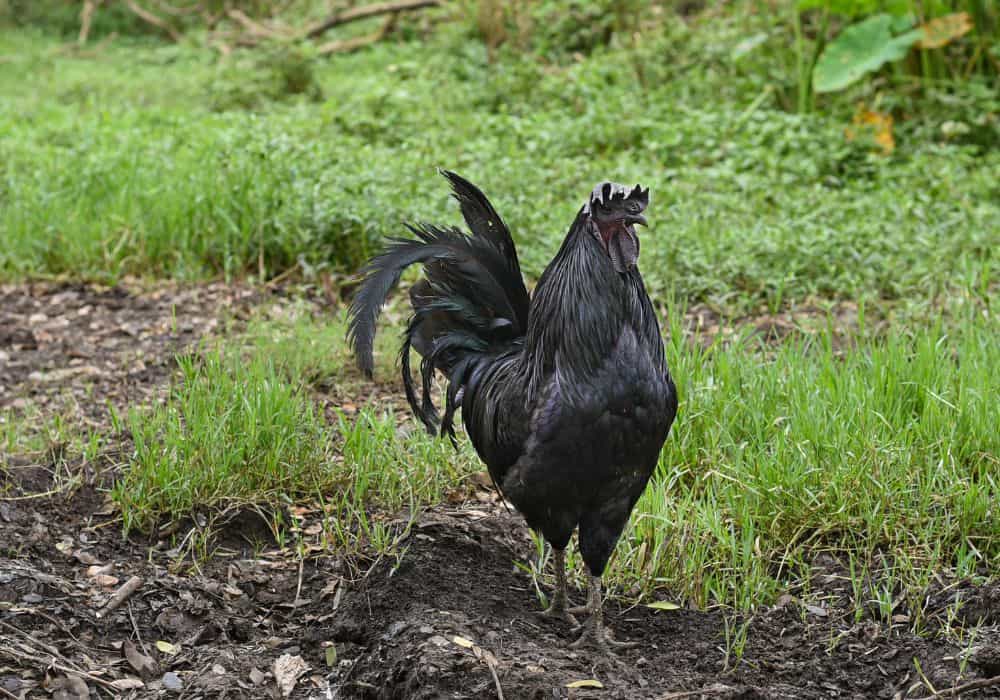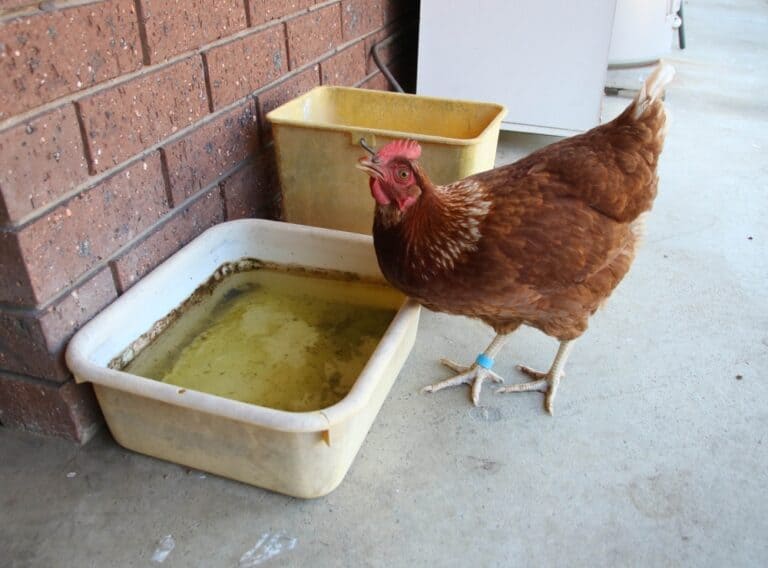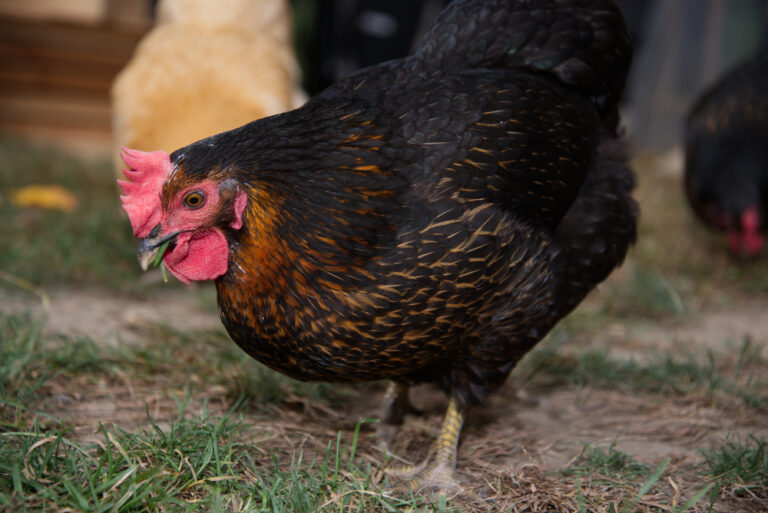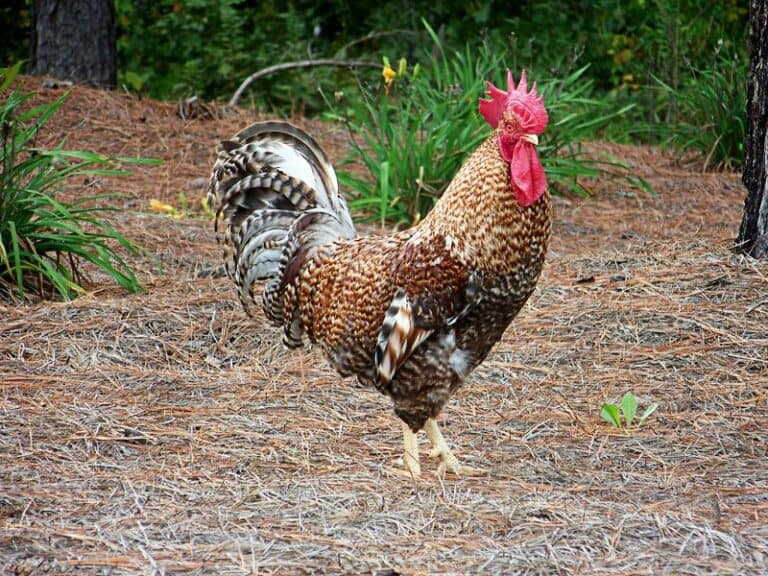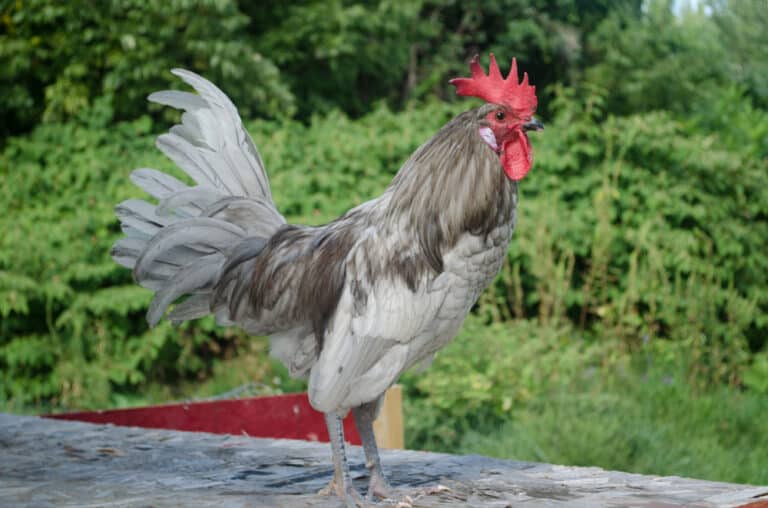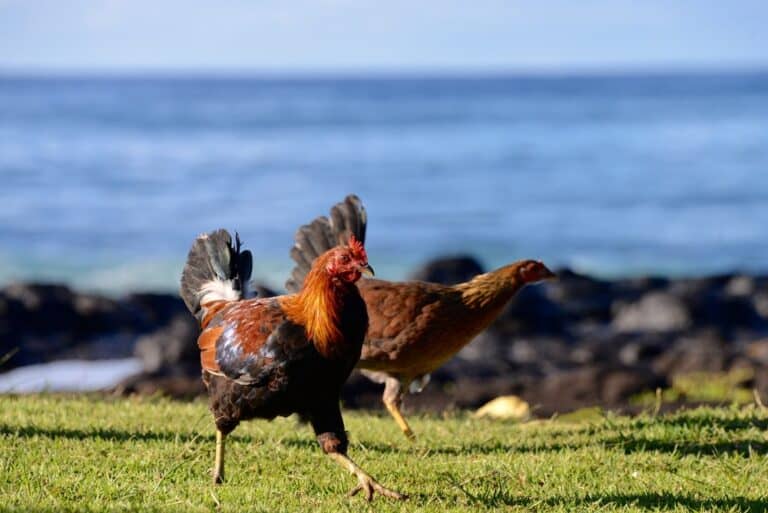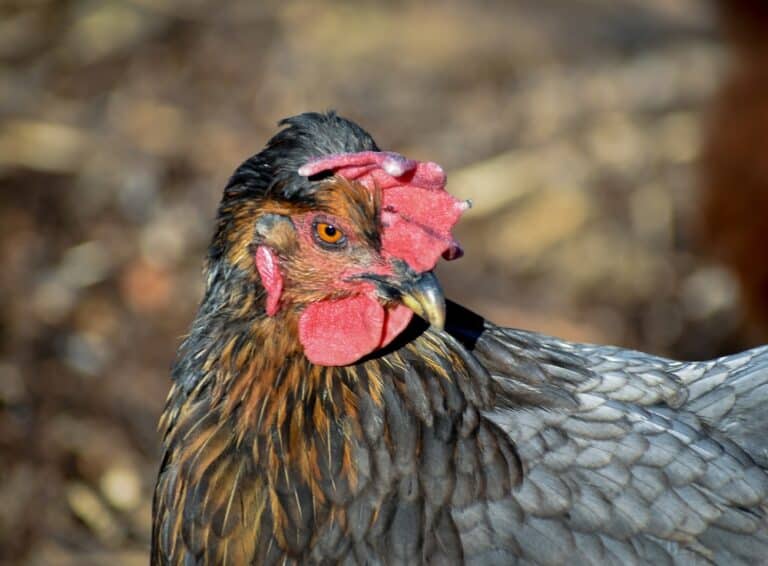It’s easy to understand the appeal of the Kadaknath chicken if you understand the meaning of its alternative name Kali Masi: “fowl having black flesh”. This Indian breed is the result of years of natural selection rather than human intervention, and the result is a beautiful and unique chicken breed.
The Kadaknath chicken is rare today as a result of overconsumption, but breeders are hard at work to replenish the chickens’ numbers while facilitating a healthy, hardy breed.
We explore the unique origin of the chicken and the hardships they have overcome, as well as explain the reason demand is so high for Kadaknath meat. Keep reading to learn everything you need about the Indian breed.
Kadaknath Chicken Origin
The Kadaknath chicken is an older breed that was originally bred by the tribal communities in the Bhila and Bhilala regions of Madhya Pradesh. While there was a brief dispute with Chhattisgarh over this geographic origin, the Indian government awarded the geographical indication tag to Madhya Pradesh in 2018.
Unlike breeds that have undergone heavy selection and human intervention to become mass egg producers, the Kadaknath chicken is not a renowned egg layer. Instead, their popularity stems from their fibro melanistic appearance, or the fact that their bones, meat, and even organs are black.
More popular examples of fibro melanistic chickens include Silkies (from China) and Ayam Cemani (from Indonesia). It’s rare to find the Kadaknath chicken outside of India, and most of the breeding efforts remain in Jhabua, Madhya Pradesh.
This is, in part, due to the high demand and disrespect for the breed across the globe. Like other black-fleshed chickens, the meat of the Kadaknath is considered a delicacy. It is in high demand, and people will pay a premium to taste the meat of the rare breed.
At one point, the demand for this meat far outweighed the supply of the time. This led to intense countermeasures and cracking down by Kadaknath breeders to prevent them from going extinct, although unscrupulous individuals are still looking for ways to get around them today.
Luckily, these measures are mostly successful, and the breed is on a comeback. This means that more will be able to enjoy the breed and its highly nutritious meat in the years to come, and Kadaknath chickens have a fighting chance at future survival.
Kadaknath Chicken Appearance
The most obvious reason chicken lovers revere the Kadaknath chicken is its unique, fibro melanistic appearance. While they aren’t wholly fibro melanistic like other breeds, the Kadaknath chicken is mostly hyperpigmented with a few variations and unique coloring accents.
Overall, the black parts of the Kadaknath chicken include:
- Skin and flesh
- Beak
- Shanks
- Toes
- Soles
- Most of their feathers (depending on the feather variation)
Their tongues, combs, wattles, and earlobes exist in shades of gray or purple hues. While the Jet Black Kadaknath is wholly black (as you would guess), some acceptable variations exist.
A penciled Kadaknath chicken bears a sprinkle of white feathering around its neck. The golden Kadaknath is similar, but their head and neck feathers are more yellow-gold in color.
Kadaknath chicks emerge with fluffy bluish gray-to-black feathering, and any variations in color only show up as they mature. After puberty, they lose the stripes of adolescence and their smooth, dark feathers gain more depth.
Like other black-feathered birds, the Kadaknath will develop a turquoise sheen on their plumage. Their single comb helps them combat warmer temperatures as they get older, and they reach a medium weight around 3.3 pounds for roosters and 2.2 pounds for hens.
Kadaknath Chicken Temperament
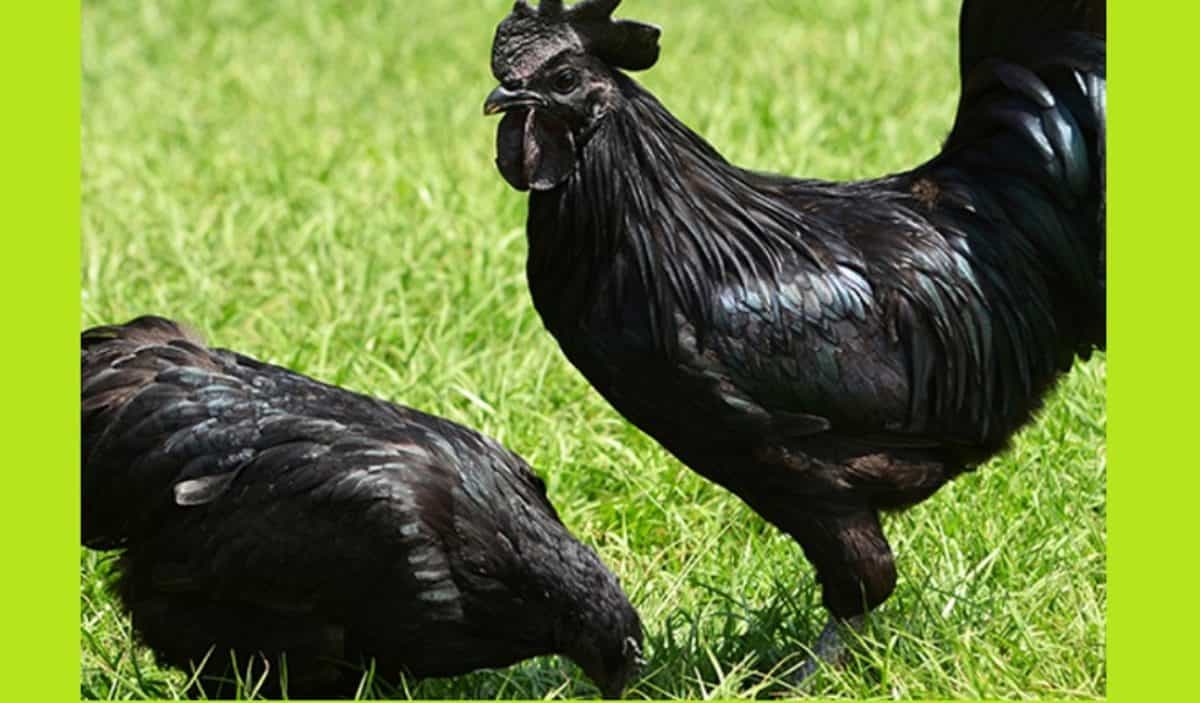
The Kadaknath chickens have spent many years as domesticated fowl, and they’re one of the calmest breeds you may come across. Kadaknath chickens are overly gentle and docile, and they have tender eyes.
Despite this gentleness, they’re still very active and would prefer to spend their days exploring and foraging, not serving time as a house pet. They will get along with their human companions, but don’t expect the puppy-dog personality other breeds often tote.
Kadaknath chickens aren’t prone to broodiness, so you won’t be chased away from eggs, but the roosters may decide you’re a threat to the flock and channel centuries of protective instincts to keep you away.
This can be curbed with a bit of bribery and the right response to the rooster aggression. As long as you treat them with respect, the Kadaknath chicken should return the sentiment.
Benefits of Kadaknath Chicken Meat
Kadaknath chickens only lay about 1 or 2 eggs per week depending on their diet, so they aren’t the best option if you need a daily supply.
Instead, the demands of the breed revolve around their rich, nutritious meat. While white meat is largely considered the healthier option, it has nothing on the meat of the Kadaknath chicken.
Overall, Kadaknath chicken meat boasts:
- Higher protein
- Low-cholesterol and fat
- Higher vitamin and mineral levels
- Eight out of the 18 known amino acids
These chickens have a lower fertility rate, making it hard to keep up a steady supply of the rich black meat, but these unique benefits make breeding programs well worth the trouble.
1. High Protein of Kadaknath Chicken Meat
Kadaknath chicken meat has a higher percentage of protein, closer to 25 percent than the 18 to 20 percent normally found in white meat.
This makes the meat well-suited to nourish growing bodies, and it’s particularly beneficial for those trying to gain weight or muscle, athletes, and pregnant individuals.
2. Low Fat and Cholesterol in Kadaknath Chicken Meat
To deepen its position as a healthier option, Kadaknath chicken meat has much lower levels of fat and cholesterol. The typical levels for white meat rest around 13 to 25 percent, but the black meat drops to 0.73 to 1.03 percent.
This is especially important for those trying to watch their weight and trying to eat a cleaner diet because of heart problems, high blood pressure, or a number of other sensitive health problems.
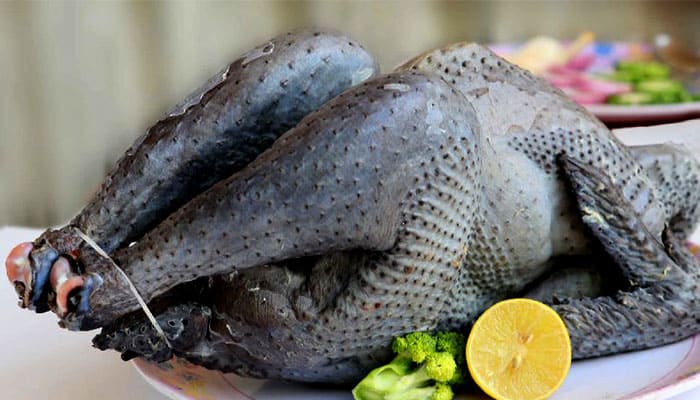
3. Vitamins and Minerals in Kadaknath Chicken Meat
Humans require a variety of vitamins and minerals for proper health, and Kadaknath chicken meat is rich in several.
For example, it contains 10 times as much iron as white chicken meat, benefiting hemoglobin production and preventing issues like fatigue or anemia. Higher calcium levels keep bones strong and healthy, while phosphorus and vitamin B boost metabolic processes.
Kadaknath chicken meat is also high in Vitamin E, benefiting blood circulation as well as the strength and appearance of skin, nails, and hair.
4. Benefits of Amino Acids and Antioxidants in Kadaknath Chicken Meat
Some prefer white meat because it’s easier to digest, and this relates to the more-digestible amino acids it contains. Kadaknath chicken meat builds on top of this, containing acids vital for creating and maintaining muscles.
These include essential amino acids like lysine and valine.
Beyond this, the antioxidants in Kadaknath chicken meat help reduce inflammation, improving the condition of and also preventing a number of chronic illnesses.
This means the meat can benefit those burdened with certain conditions, but it can also prevent the occurrence of these illnesses to start. It may not be a cure-all, but it’s a desirable nutritious tool for those who understand food is medicine.
Caring for Kadaknath Chickens
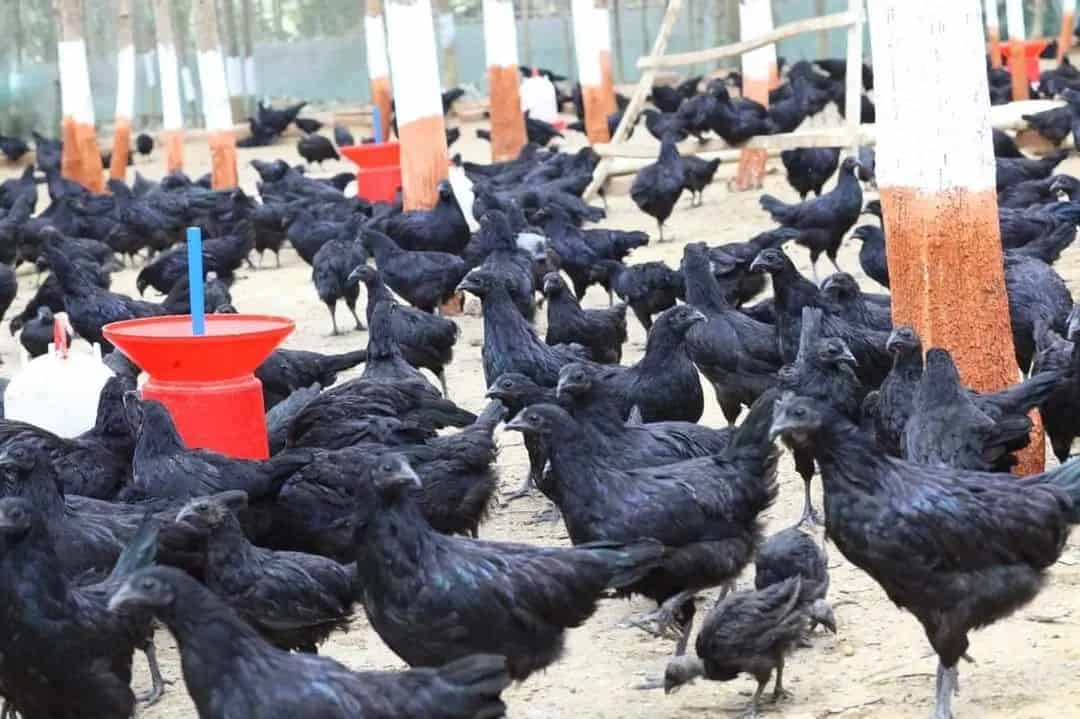
Kadaknath chickens are worth more than a production-line care plan, and their sensitive fertility issues are eased when the chickens are happy and healthy.
Because of this, it’s important to provide them with proper and respectful care. Kadaknath chickens make it easy by being a robust breed unlikely to contract even the most common illnesses, but they can only do this if you set them up for success.
Like most chickens, proper care involves:
- Offering a complete nutrition that matches their current stage in life
- Giving them safe and comfortable spaces to roam and rest
- Setting them up with preventative vaccines and ensuring quick responses to illness or injury
This makes it easy for breeders to focus on hatching eggs rather than keeping feeble adults alive.
Feeding Kadaknath Chickens
While Kadaknath chickens of any age will understand how to meet their needs through foraging, commercial foods can provide dedicated support for their current development.
This means chicks will get the most from high-protein starters, but mature Kadaknaths would put on too much weight. Once they’re adults, they must switch to either a maintenance feed or a high-calcium layer feed.
Beyond this, Kadaknath chickens appreciate fresh fruits and vegetables that provide powerful antioxidants and variety. They’re active birds that are unlikely to overeat, but access to sugary fruits should be limited.
Sheltering Kadaknath Chickens
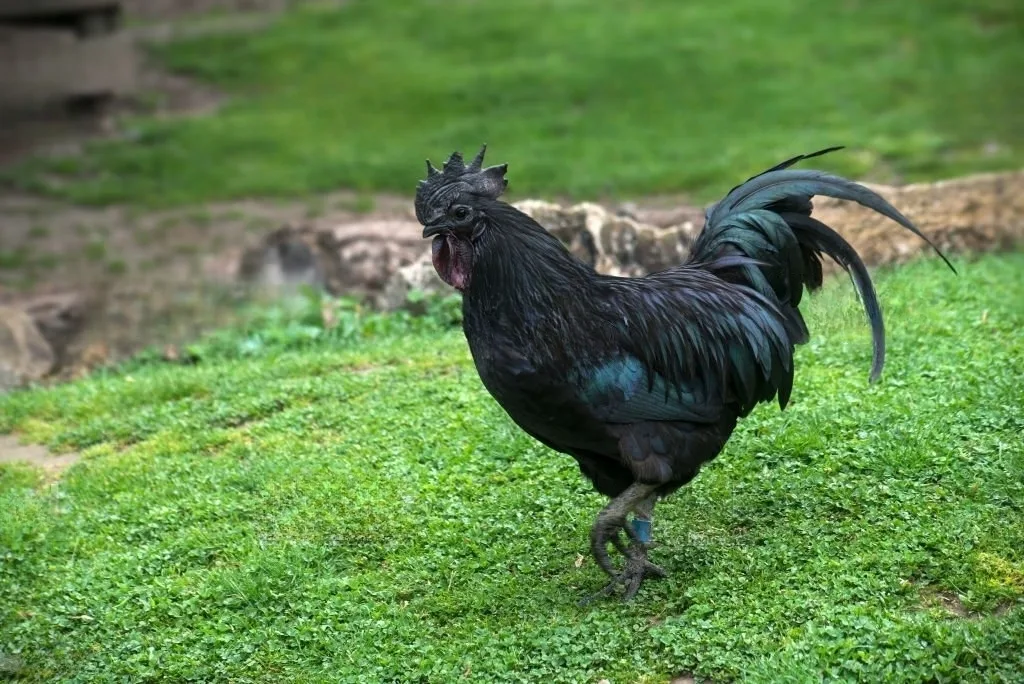
Kadaknath chickens can hold their own when free ranging, but they need a solid coop to sleep in overnight. This area should be well insulated, especially in lower temperatures, and have at least 1 foot of roost space and 4 square feet of floor space per bird.
While a covered run will keep them safe during the day, the breed will quickly become bored and develop behavioral issues. For this reason, we recommend as much free space as possible with proper precautions like secure fences and even netting above to interfere with flying predators.
Health Care for Kadaknath Chickens
Finally, Kadaknath chicken breeders should take advantage of advancements in poultry health to keep the flock as hardy as possible. Cleanliness is important, but so are tasks such as:
- Vaccinating the flock against illnesses such as fowl pox or cholera
- Deworming them on a regular schedule
- Having a knowledgeable vet on call for any emergencies
Kadaknath chickens are unlikely to need intervention on their behalf, but it’s important that you have a plan should any issues arise.
Conclusion
The Kadaknath chicken is a stunning rare breed that is still recovering from near-disaster. Breeders in the original area are hard at work to ensure the breed has a clear path forward with healthy genes and laws that protect the breed.
If you’re lucky enough to own one, make sure you treat your Kadaknath chicken with the respect and care they deserve. They don’t ask for much, and they can’t repay you with a never ending supply of eggs, but their kind eyes and easygoing temperament will make them one of the best companions you’ve ever had.
Interested in learning more about the Kadaknath chicken? Drop any questions or comments you have below!

